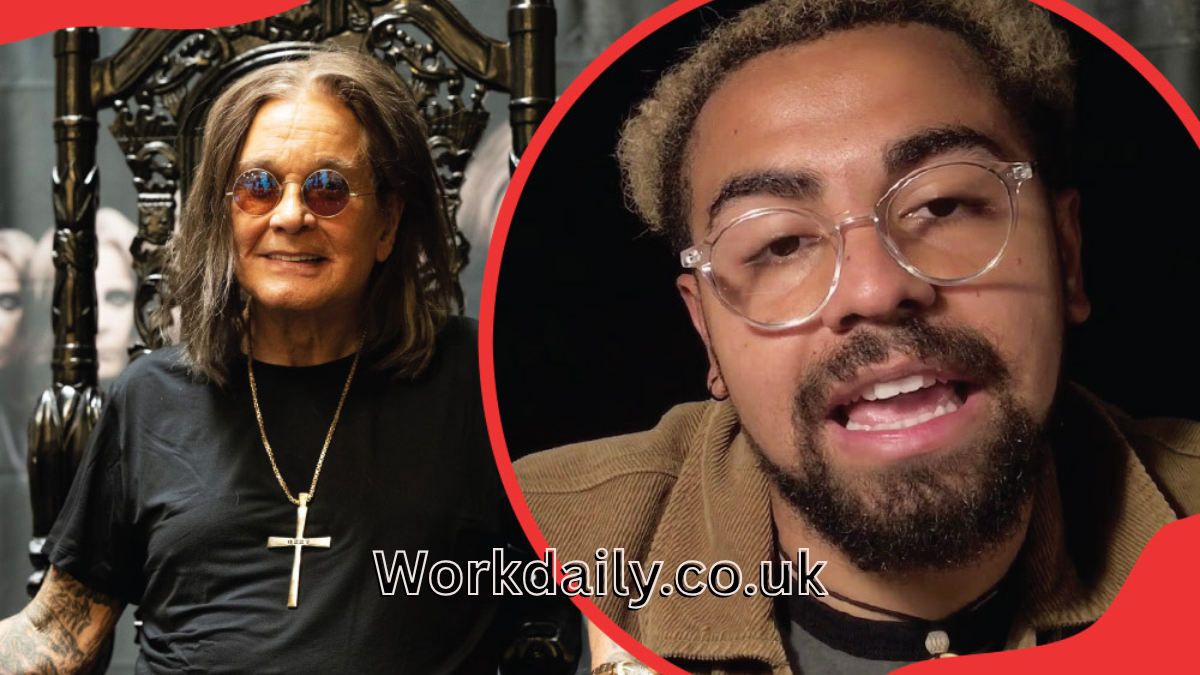In the sprawling world of Hollywood dynasties Thomas Emil Sicks and political legacies, certain individuals choose to step out of the spotlight, carving a path defined not by public acclaim, but by personal conviction. Holds a unique and intriguing place within a family renowned for its immense influence in both Canadian politics and the American film industry. As the firstborn son of the late Canadian actress and activist, Shirley Douglas, Thomas is the elder brother to his world-famous half-siblings, Kiefer Sutherland and Rachel Sutherland. While the names Douglas and Sutherland are synonymous with acting talent and political activism, Thomas Emil Sicks has largely remained a figure of quiet curiosity, a deliberate choice that makes his story all the more compelling. He stands as a fascinating counterpoint to his family’s public life, a person who has forged a life on his own terms.
The Douglas-Sutherland lineage is a complex and formidable one. On his mother’s side, Thomas is the grandson of Tommy Douglas, a revered Canadian statesman and the father of Canada’s public healthcare system. This political legacy is matched by the acting prowess of the Sutherlands, with his stepfather, Donald Sutherland, and his half-siblings, Kiefer and Rachel, all achieving significant acclaim in the film and television industries. This blend of artistry, activism, and public service has created a family narrative that is deeply embedded in both Canadian and American culture. Thomas, however, operates outside of this well-known story, choosing to live a life that is a stark contrast to his family’s high-profile existence. His story is one of self-determination, a testament to the power of living an authentic life in the shadow of celebrity, and a challenge to the conventional expectations placed upon the children of famous parents.
Family and Early Life: Navigating a Complex Legacy
Thomas Emil Sicks’s familial roots trace back to his mother, Shirley Douglas, and his father, Thomas Emil Sicks. His father was a Canadian prairie brewery heir, and his marriage to Shirley Douglas was her first. While this union was brief, it resulted in the birth of their son, Thomas. The public record holds limited information about their relationship and subsequent divorce, a detail that underscores the private nature of this period of Shirley Douglas’s life. Following this marriage, Shirley went on to marry the celebrated actor Donald Sutherland, a union that brought forth two more children, the twins Kiefer and Rachel. This created a blended family dynamic that was surely unique and complex, with Thomas as the elder half-sibling. The children were raised in a household where both parents were public figures, one an activist and the other an actor, and where their lives were often subjected to the rigors of travel and public scrutiny.
The early life of Thomas Emil Sicks is largely shielded from public knowledge, a deliberate aspect of his narrative that speaks volumes. Unlike his half-siblings, whose childhoods have been more openly discussed in interviews and biographies, very little is known about Thomas’s formative years, education, or upbringing. This lack of public detail is not a void but rather a defining feature of his story. It suggests a life protected from the public eye from the very beginning. The decision to maintain this level of privacy likely began with his parents, who, despite their public profiles, may have made a conscious effort to shield their firstborn from the media’s constant gaze. This choice stands in stark contrast to the public lives that his half-siblings, Kiefer and Rachel, would later lead. Thomas’s life serves as an interesting case study on the different ways in which children of famous parents can choose to navigate their unique circumstances, and the degree to which they can successfully maintain a private identity.
Growing up in a blended family with two of the most well-known figures in Canadian and American entertainment must have presented a unique set of challenges and experiences. The children were exposed to a life that oscillated between the quiet privacy of home and the high-energy, public-facing careers of their parents. Thomas Emil Sicks relationship with his half-siblings, Kiefer and Rachel, is a key part of his story, a bond formed within a complex and high-profile family structure. While the public is more familiar with the close relationship between Kiefer and Rachel, Thomas’s connection to them is a fundamental part of the family’s dynamic. His presence as the elder brother adds a distinct layer to the family history, one that exists outside the well-known narrative of the Sutherland twins. This complex family structure, with its blend of political heritage and Hollywood celebrity, provides the backdrop against which Thomas Emil Sicks own journey of self-discovery unfolded.
Career and Professional Life: A Path of His Own
In a family defined by its creative and political contributions, one might assume that Thomas Emil Sicks would have followed a similar path. The public often expects the children of famous actors to become actors themselves, or for the descendants of political figures to enter public service. However, the available information indicates that Thomas Emil Sicks has charted a professional course distinctly different from his family’s. There are no public records of him pursuing a career in acting, film, or politics. This is a significant detail that sets him apart from his Thomas Emil Sicks famous half-siblings, Kiefer and Rachel, who have both made successful careers in the entertainment industry. The lack of public information about his professional life is not a mere oversight but a deliberate feature of his story, suggesting a career path that exists outside the scrutiny of the media and the public. He has seemingly chosen a life where his work and his professional identity are separate from his family’s celebrity.
This choice directly challenges the assumption that he would have followed in the footsteps of his acting-and-activist-driven family. While Kiefer and Rachel embraced the family’s artistic legacy, Thomas has seemingly opted for a different kind of fulfillment. This decision may be a reflection of his personal interests and talents, or it may be a conscious effort to forge an identity that is entirely his own. In a world where famous last names can open doors, Thomas Emil Sicks choice to pursue a path of his own making is an act of quiet self-determination. It suggests a desire to be valued for his own merits and contributions, rather than for his family connections. By choosing a life outside the limelight, he has created a space where his professional achievements, whatever they may be, stand on their own.
Given the absence of public information about his career, we can only speculate on the nature of his contributions. It is likely that his impact is found in a more private, professional capacity rather than a public, creative one. Perhaps he works in a field that values discretion, or he is a person who simply prefers to keep his professional life separate from his family’s public narrative. Regardless of the specifics, his choice of a non-public career path is a significant part of his identity. It demonstrates that he is not defined by the fame of his family but by his own choices and his own sense of purpose. While the world celebrates the public art and activism of the Sutherlands, Thomas Emil Sicks is a testament to the fact that a meaningful and impactful life can be lived with a powerful sense of privacy and self-sufficiency.
The Choice of Privacy: The Unseen Sibling
The most defining characteristic of Thomas Emil Sicks is his unwavering commitment to privacy. In an age of social media and constant connectivity, his ability to remain out of the public eye is a remarkable feat. This conscious decision to live a private life allows him to exist free from the intense media scrutiny and the constant comparison to his famous family members. While his half-siblings, Kiefer and Rachel, have lived their lives under the spotlight, facing the public’s judgment and praise, Thomas Emil Sicks has enjoyed the freedom that comes with anonymity. This choice has undoubtedly protected his personal relationships and professional endeavors from the public’s relentless gaze. It is a testament to his strength of character and his desire to build a life on his own terms, without the added pressure of celebrity. His decision to remain out of the public eye is a powerful statement about the value of an authentic life lived outside the confines of fame.
A significant factor in his ability to maintain this privacy is the respect his family has shown for his decision. Despite their own public careers, the Douglas and Sutherland families have seemingly protected and respected Thomas Emil Sicks desire for a private life. They do not publicize his life or his whereabouts, a factor that has allowed him to remain largely unknown to the broader public. This mutual respect is a powerful element of their family dynamic, demonstrating a shared understanding that while their lives are public, Thomas’s is not. This quiet agreement has allowed him to forge an identity that is not contingent on his family’s fame. The family’s silence on his private life is perhaps the greatest sign of their love and respect for him, allowing him the space to live a life free from the burdens of celebrity.
In the end, Thomas Emil Sicks’s legacy is defined not by fame, but by his quiet self-determination. He has created a powerful, albeit silent, counter-narrative to the celebrity culture that surrounds him. While the world celebrates his half-siblings’ public art and activism, Thomas’s story is a testament to the quiet strength of living a life of one’s own choosing. His ability to live an authentic life on his own terms, in stark contrast to the narratives that define his family, is a powerful form of legacy. It proves that a life can be both meaningful and impactful without the need for public recognition or the validation of celebrity. Thomas Emil Sicks is an unseen figure in a famous family, but his life, defined by his choice of privacy, is a powerful and unique contribution to the Douglas-Sutherland story.
Conclusion
The journey into the life of Thomas Emil Sicks reveals a powerful and nuanced narrative that stands in stark contrast to the public-facing lives of his family. As the eldest son of the late Shirley Douglas, and the elder half-brother to Kiefer and Rachel Sutherland, he occupies a unique position within a celebrated dynasty. Yet, unlike his siblings, he has actively chosen to live a life of privacy and quiet self-determination. This is not a story of a person in the shadows, but of an individual who has consciously carved out a space for authenticity, free from the relentless gaze of celebrity culture. His commitment to this path challenges the very notion of what constitutes a meaningful legacy.
In a world obsessed with fame and public recognition, Thomas Emil Sicks’s story is a testament to the power of living on one’s own terms. While his half-siblings’ legacies are built on their public art and activism, his is a powerful, silent counter-narrative—a celebration of personal choice and a life well-lived outside the conventional definitions of success. He has proven that one can be deeply connected to a famous family while simultaneously forging an entirely separate identity. Ultimately, Thomas Emil Sicks’s existence is a testament to the fact that a life of great meaning and quiet strength can be lived and celebrated without ever seeking the validation of a public audience, making his unseen legacy all the more profound.




